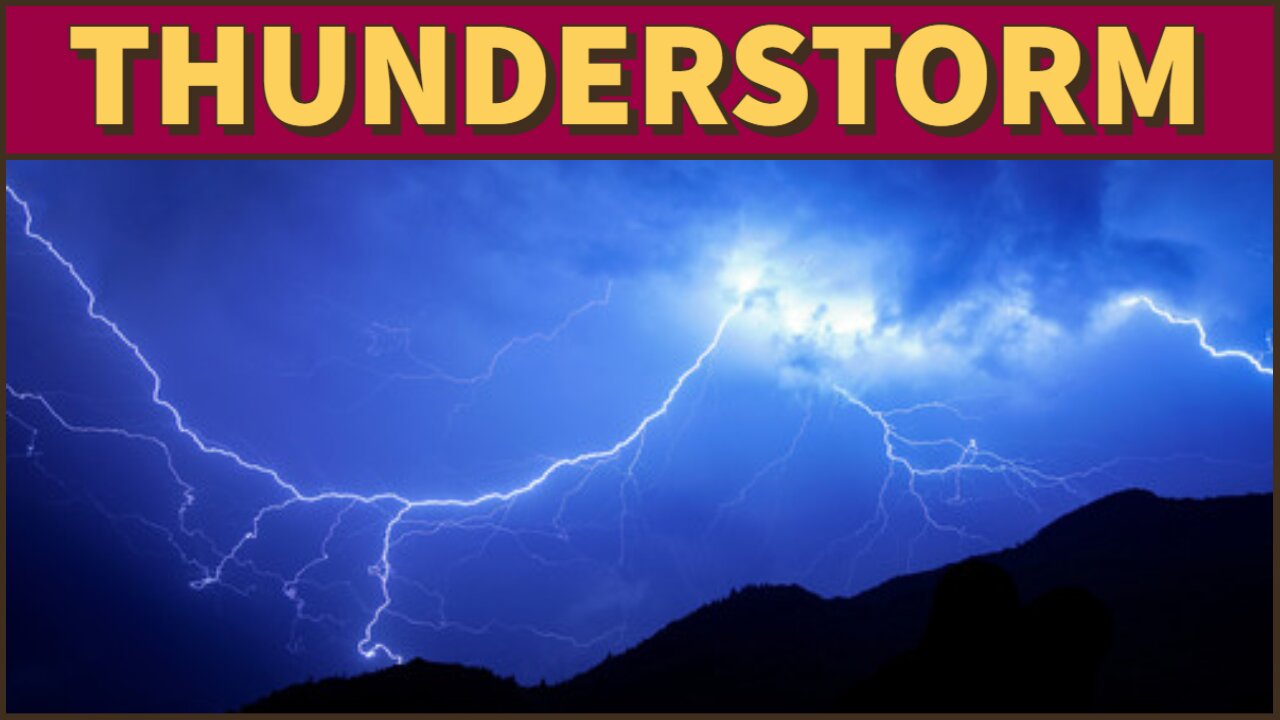Premium Only Content

What is a Thunderstorm
Many people can sense when the weather is building toward the dark clouds, lashing rain, forks of light, and cracks of sound, that make a thunderstorm.
It starts, most often on spring or summer day, with warm, moist air.
This warm, moist air rises above cooler air, sometimes nudged upward by a sea breeze or cold front.
As the warm air rises, its vapor condenses into liquid droplets to form clouds.
The condensing gas gives up heat, which warms surrounding air.
This warm air in turn pushes upwards.
As the atmosphere becomes unstable, vertical motion increases.
The cloud gets taller and taller until it forms thunderhead.
Though its mushroom like shape is not always clear from the ground, a thunderhead can reach several miles in height.
Near the top of the cloud mass, droplets get bigger and heavier and eventually fall as rain or hail, accompanied by rushing downdrafts of colder air.
Meanwhile, close by, warm updrafts continue to lift small droplets to great heights.
Amid the turbulence, water particles collide, knocking negative charge electrons from rising particles.
In this way an electrical field forms within the storm; the bottom is negative charged, and the top is positively charged.
Zap! Lightning hits the air to more than 50,000 degrees Fahrenheit in less than a second.
This causes in the lightning channel to expand explosively, violently compacting the air around it—a disturbance called a shock wave that our ears here as thunder.
-
 LIVE
LIVE
LFA TV
13 hours agoLFA TV ALL DAY STREAM - MONDAY 8/25/25
8,627 watching -
 LIVE
LIVE
Surviving The Survivor: #BestGuests in True Crime
20 minutes agoLIVE Court: Wendi Adelson Testifies Against Mom, Donna Adelson, in Dan Markel's Murder Trial
272 watching -
 LIVE
LIVE
JuicyJohns
51 minutes ago🟢#1 REBIRTH PLAYER 10.2+ KD🟢
180 watching -
 1:14:57
1:14:57
JULIE GREEN MINISTRIES
2 hours agoRUSSIA IS ABOUT TO RELEASE SOMETHING THAT WILL CRUSH THE ESTABLISHMENT
33.8K119 -
 LIVE
LIVE
GritsGG
51 minutes agoWin Streaking! Coloring Hair @11AM PST~ Most Wins 3435+ 🧠
48 watching -
 LIVE
LIVE
Welcome to the Rebellion Podcast
19 hours agoMonday Funday - WTTR Podcast Live 8/25
312 watching -
 1:21:24
1:21:24
Game On!
15 hours ago $0.02 earnedTom Brady And The Las Vegas Raiders ARE BACK! 2025 NFL Preview!
23.9K1 -
 LIVE
LIVE
The Bubba Army
2 days agoShould RaJa Jackson Be Arrested? - Bubba the Love Sponge® Show | 8/25/25
1,936 watching -
 LIVE
LIVE
FyrBorne
14 hours ago🔴Warzone M&K Sniping: Builds So Strong They Think I'm Hacking
275 watching -
 2:01:48
2:01:48
BEK TV
3 days agoTrent Loos in the Morning - 8/25/2025
19.9K